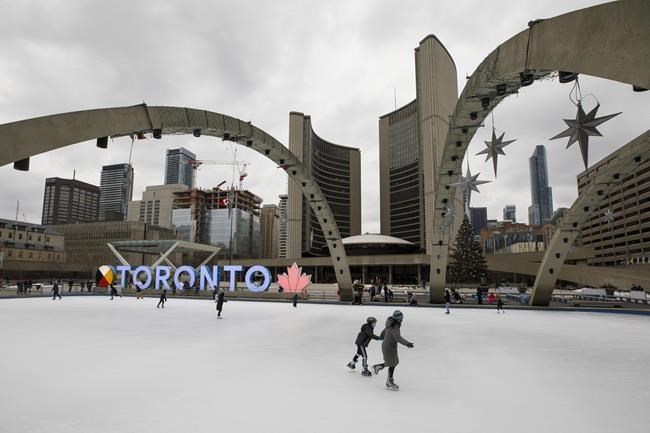Hidden in a downtown Toronto tourist hub is a rich, little-known history.
The area now called the Discovery District -- home to such landmarks as Toronto City Hall, Nathan Phillips Square and the Eaton Centre -- was once a thriving Black community known as The Ward, which served as a landing spot for American refugees fleeing slavery.
That the stories are now largely forgotten speaks volumes about the province's approach to teaching Black history, said Natasha Henry, the head of the Ontario Black History Society.
"I'm quite familiar with what is not taught -- all of what is not taught about the extensive history of Black people, not only in Toronto, but in the province and across Canada," she said, noting that Ontario's Ministry of Education doesn't include any Black history in its curriculum, instead leaving it up to individual teachers to choose what to teach.
And The Ward is seldom included in lesson plans, Henry said.
Black residents took root in The Ward, which was bound by the streets now known as University, Yonge, College and Queen, in the early 19th century, she said.
Early residents included a small number of Black people who had been enslaved in Ontario and their descendants, as well as African American freedom seekers, Henry said.
"Some who were fleeing slavery from the United States, but also free Blacks who were mostly from the northern states."
Once settled in the neighbourhood, residents built businesses -- for instance, Thornton and Lucie Blackburn, who operated Toronto's first taxicab -- and established numerous churches, Henry said.
"They exercised their right to vote, they were politically active," she said. "When racism reared its head, they spoke out about it, they wrote letters, they wrote petitions."
Henry pointed to letters residents of The Ward wrote to the city, urging politicians to bar minstrel shows, where white performers often wore blackface and acted out racist skits, from being performed there.
The community also rallied behind Albert Jackson, the city's first black mail carrier, when his white colleagues refused to train him, she said.
"The black community mobilized, and went to everyone. To local politicians, to provincial politicians. It wound up getting John A. Macdonald involved," she said. "And these politicians were responsive, because they did want that segment of the Black vote."
The Ward had always been multicultural, Henry said, and as time went on, some of the Black residents moved away and new immigrants of different backgrounds moved in.
Photos from city archives show that by the early 20th century, some of the buildings in The Ward had fallen into disrepair.
Eventually, per The Ward Museum, the city forced residents out of the neighbourhood and razed many of the buildings to make way for hospitals and government structures such as the new City Hall.
In recent years, the city's heritage department has started putting up plaques to commemorate Toronto's Black history, Henry said. But those who want to learn about that history often have to seek it out.
The curriculum's dearth of Black history leaves much to be desired, she said. The problem with leaving it up to individual teachers to choose whether to teach Black history is that they can also choose not to.
"This is not an indictment to say that it's being done maliciously, because oftentimes, a lot of teachers have gone through the same system, not learning it," Henry said. "And so it's kind of like this reproduction of this ignorance."
Caitlin Clark, a spokeswoman for Education Minister Stephen Lecce, said the government is working to ensure schooling is equitable, in part by introducing anti-racism training for teachers.
"The minister believes that Ontario’s curriculum must better reflect the diversity and experiences of every Ontarian — notably of racialized Canadians — who have made immense contributions to our economy, democracy, and society," she said.
This report by The Canadian Press was first published Feb. 11, 2021.
Nicole Thompson, The Canadian Press



